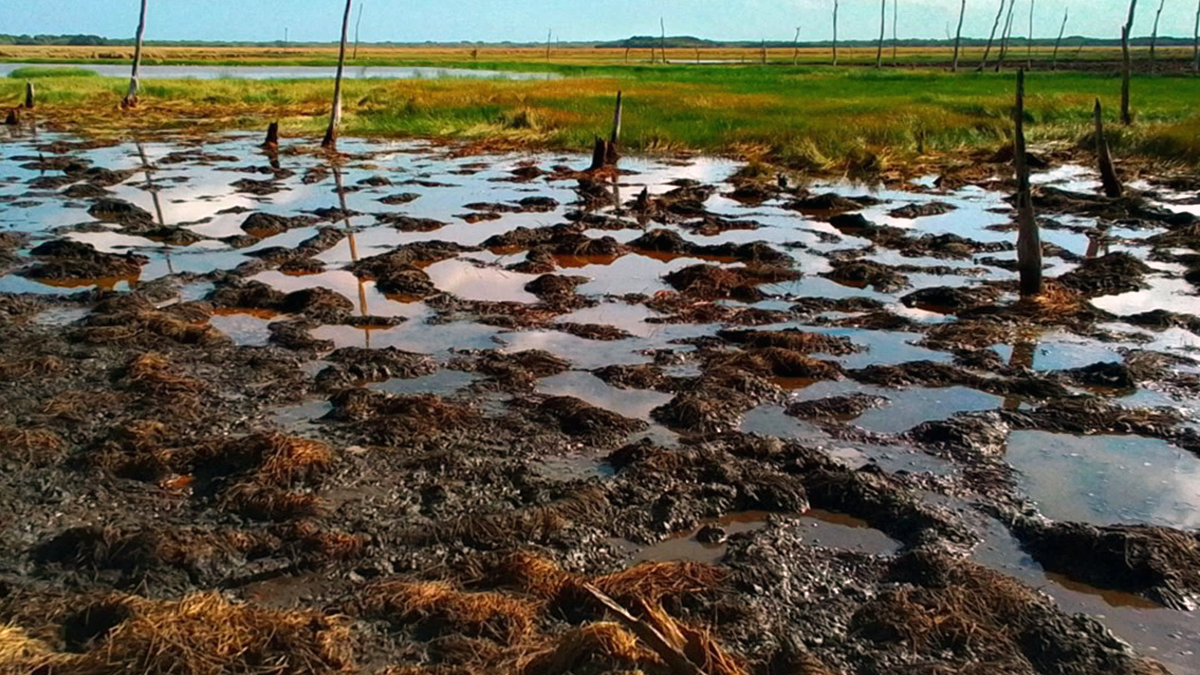Editors’ Highlights are summaries of recent papers by AGU’s journal editors.
Source: Journal of Geophysical Research: Biogeosciences
The prevailing view of mammal activity in ecosystems is that they have marginal impacts to services like greenhouse gas emissions. However, that is not always the case, especially with large, feral ungulates. In northern Australia, the indigenous Yolŋu peoples connect and rely on coastal wetlands for spiritual connection, tourism, fisheries, and crocodile egg harvesting. These wetlands, however, suffer damage from invasive pigs and buffalo. The Yirralka Rangers of the region attempt to control these from the air.
Crameri et al. [2025] partnered with the local community to evaluate the impact of these feral ungulates on wetland greenhouse gas emissions and carbon stocks, an ecosystem service growing in value for climate change mitigation. Fenced enclosures allowed the authors to reveal a fourfold increase in carbon dioxide and methane emissions in unfenced areas, while fenced areas increased in belowground biomass with limited impact on soil organic carbon. The work demonstrates how research partnerships with local communities, as documented in the article’s Inclusion in Global Research statement, can support local land stewardship and contribute to global conservation and climate mitigation efforts.
Citation: Crameri, N. J., Mununggurr, L., Rangers, Y., Gore, D. B., Ralph, T. J., Pearse, A. L., et al. (2025). Feral ungulate impacts on carbon cycling in a coastal floodplain wetland in tropical northern Australia. Journal of Geophysical Research: Biogeosciences, 130, e2025JG009056. https://doi.org/10.1029/2025JG009056
—Ankur Desai, Associate Editor, JGR: Biogeosciences


